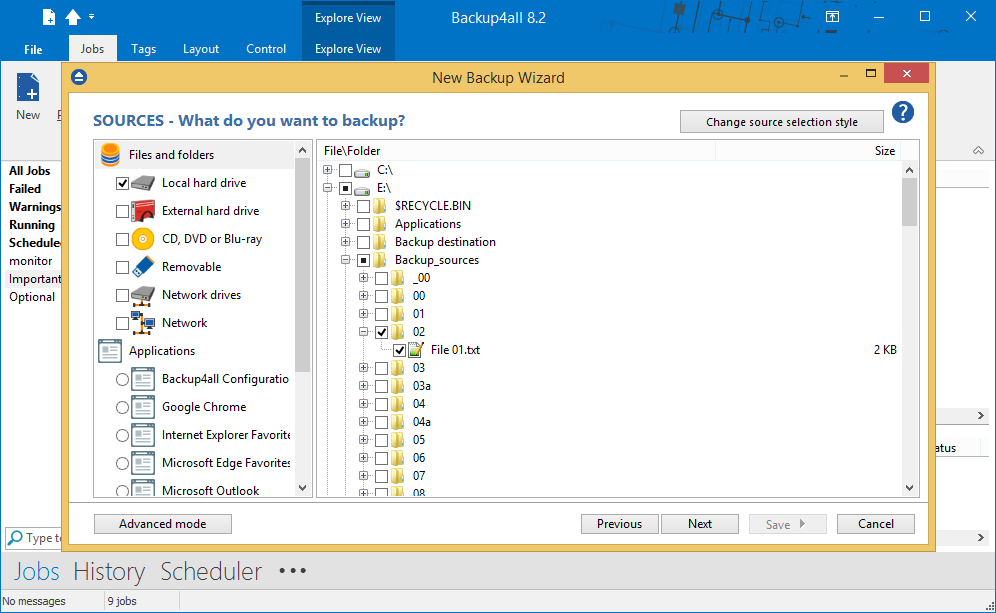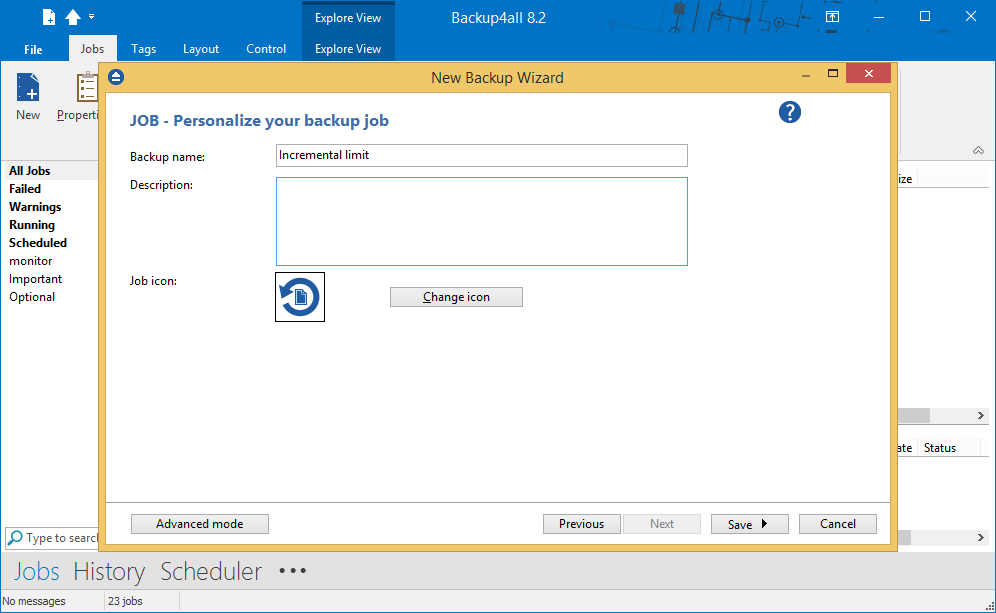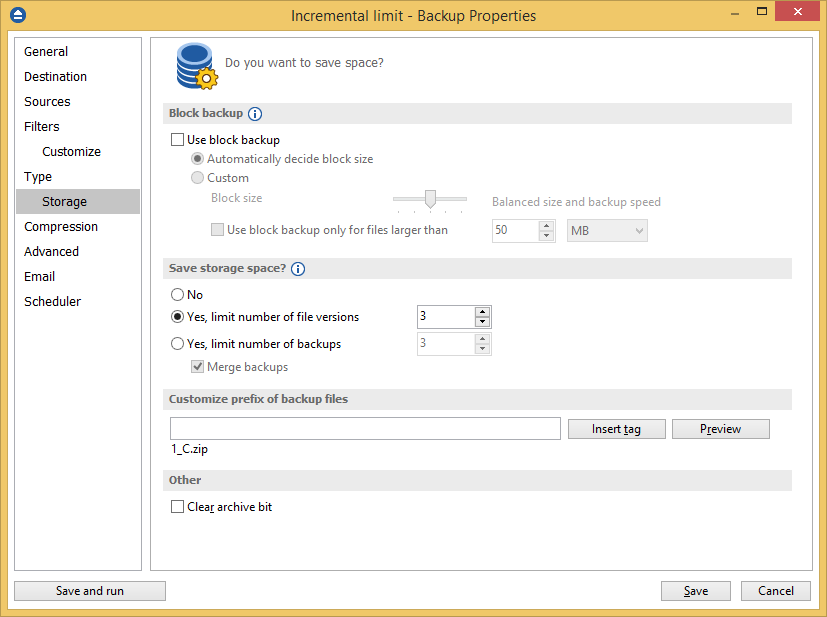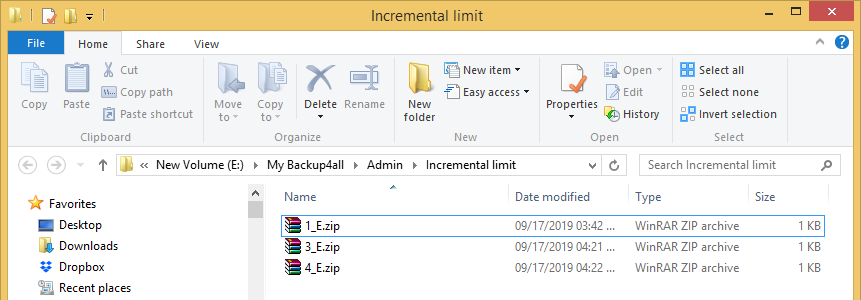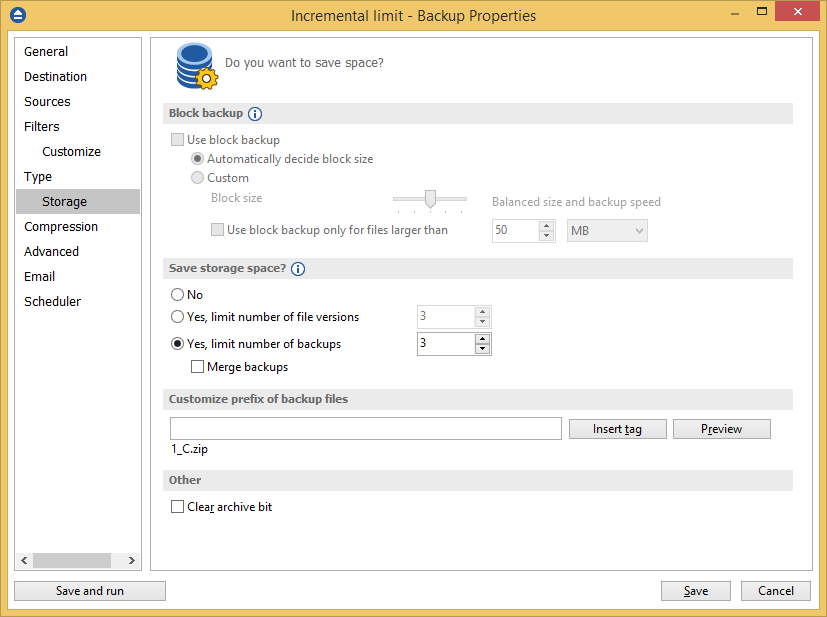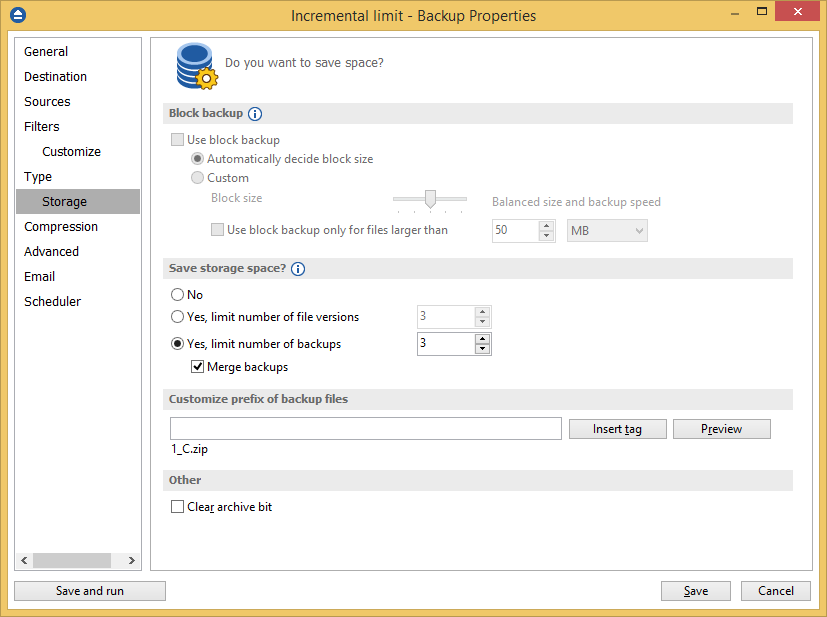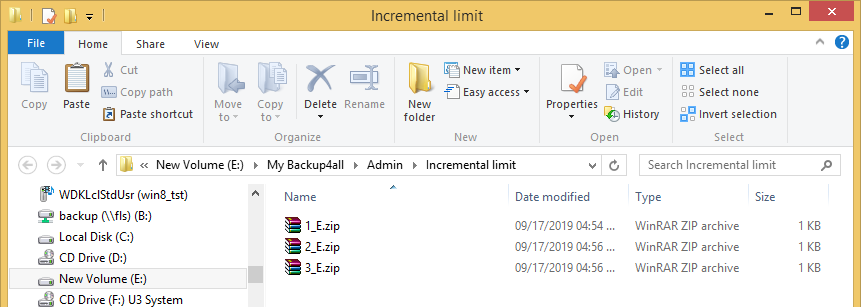This article shows how to create an incremental backup, how the limit can be applied and how each type of limit works. In Backup4all you can limit the number of file versions or limit the number of backup versions. In the last case you can set the application to merge the old versions before deletion in order to keep as many backup versions as possible.
On this page:
- How to configure the backup job
- How to limit number of file versions
- How to limit number of backups without merge
- How to limit number of backups with merge
How to configure the backup job
- Open Backup4all
- Press New button to open the New Backup Wizard. Select the backup destination. Then press Next.
![merge01 merge01]()
- On this page you can select the backup sources. When ready, press Next.
![merge02 merge02]()
- On the Filter the backup sources page, you can set include/exclude filters for backup sources. Then press Next.
- On the How do you want to backup page, select the Incremental backup type. Press Next.
![merge03 merge03]()
- On the When do you want to backup page, you can set the backup job to automatically run on the specified time and days. Press Next.
- On the Personalize your backup job page, enter a name for the backup in the Backup name field. Press Next.
![merge02 merge02]()
- In Explore View (F2) of Backup4all, we can see the backup sources
![merge04 merge04]()
How to limit number of file versions
We will perform several backup executions to see what we get in destination
- To start, we open Backup Properties -> Type -> Storage and set the limit for number of file versions at 3
![merge05 merge05]()
- We selected a folder with one file (“File 01.txt”) as backup source and we run the backup
- In destination we will get 1_E.zip file containing “File 01.txt”
![merge06 merge06]()
- For the 2nd execution, we will modify the existing file (“File 01.txt”)
![merge06 1 merge06 1]()
- In destination we will get 2_E.zip containing the second version of: “File 01.txt”
![merge07 merge07]()
- For the 3rd execution, we will add a new source file (“File 02.txt”) and also edit the existing file “File 01.txt”
![merge08 merge08]()
- In destination we will get 3_E.zip containing: “File 01.txt” and “File 02.txt”. Now the limit has been reached for “File 01.txt”
![merge9 merge9]()
- For the 4th execution, we will add a new source file (“File 03.txt”) and also edit the existing file “File 01.txt”
![merge10 merge10]()
- In destination we will get 4_E.zip containing: “File 01.txt” and “File 03.txt”
- After the 4th version of the file is created, when applying the limit, the oldest backup execution (except the full backup) is deleted The last full backup is never altered, so the oldest version of “File01.txt” to be deleted is in backup no.2 (2_E.zip)
![merge11 merge11]()
How to limit number of backups without merge
We will perform several backup executions to see how it works
- To start, we open Backup Properties -> Type -> Storage and set the limit for number of backups at 3
- We select a folder with one file (“File 01.txt”) as backup source and we run the backup
- In destination we will get 1_E.zip file containing “File 01.txt”
- For the 2nd execution, we will add a new source file (“File 02.txt”)
- In destination we will get 2_E.zip containing: “File 02.txt”
- For the 3rd execution, we will add a new source file (“File 03.txt”)
- In destination we will get 3_E.zip containing: “File 03.txt”. Now the limit has been reached
- For the 4th execution, we will add a new source file (“File 04.txt”)
- In destination we will get 4_E.zip containing: “File 04.txt”. After the 4th version of the file is created, the older backups (except the full backup) are deleted
- When the limit is applied, the last full backup is never altered, so backups no.2 and 3 (2_E.zip and 3_E.zip) will be deleted from destination
How to limit number of backups with merge
We will perform several backup executions to see how it works
- To start, we open Backup Properties -> Type -> Storage and set the limit for number of backups at 3. Also select the “Merge backups” option
![merge19 merge19]()
- We select a folder with one file (“File 01.txt”) as backup source and we run the backup
- In destination we will get 1_E.zip file containing “File 01.txt”
![merge20 merge20]()
- For the 2nd execution, we will add a new source file (“File 02.txt”)
- In destination we will get 2_E.zip containing: “File 02.txt”
![merge22 merge22]()
- For the 3rd execution, we will add a new source file (“File 03.txt”)
![merge23 merge23]()
- In destination we will get 3_E.zip containing: “File 03.txt”. Now the limit has been reached
![merge25 merge25]()
- For the 4th execution, we will add a new source file (“File 04.txt”)
![merge24 merge24]()
- In destination we will get 4_E.zip containing: “File 04.txt”. After the 4th version of the file is created, the older backups (except the full backup) are merged
![merge26 merge26]()
- When the limit is applied, the last full backup is never altered, so backups no.2 and 3 (2_E.zip and 3_E.zip) will be merged into 3_E.zip
This backup will include “File 02.txt” and “File 03.txt“





